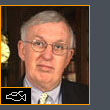
Jackson is also the Jacques Barzun Professor of History and the Social Sciences at Columbia University, where he has been a fixture for one third of a century. A graduate of the University of Memphis (B.A., magna cum laude, 1961) and the University of Chicago (M.A., 1963; Ph.D., 1966), he served for three years as an officer in the United States Air Force before joining the Columbia faculty in 1968. After being promoted to the Andrew W. Mellon professorship in 1987, he assumed the Barzun professorship in 1990. He has served as president of the Urban History Association (1994–95), the Society of American Historians (1998–2000), and the Organization of American Historians (2000–2001). Professor Jackson is the editor-in-chief of the single-volume, 1373-page, 1.4-million-word Encyclopedia of New York City, which was published in 1995 by Yale University Press. Assisted by two managing editors, two deputy managing editors, 68 associate editors, 25 project editors, and almost 700 individual authors, he worked for 13 years to create the first major reference tool for the giant metropolis in almost a century. The book includes 700 illustrations, dozens of maps and tables, and more than 4,000 individual entries (on, among other topics, 416 neighborhoods, 68 ethnic groups, 114 schools, 29 religious denominations, and 102 newspapers and magazines). According to the New York Times, "no one with even a passing interest in New York will be able to live without it." As of 2001, it had been reprinted five times and had received five awards for reference excellence. A completely revised second edition is now in the planning stages. A member of the editorial boards of several professional journals, Professor Jackson is the general editor of the Columbia History of Urban Life, 20 volumes of which had appeared by 2001. He was the editor-in-chief of the Dictionary of American Biography (1990–95), and he is now the editor-in-chief of the Scribner's Encyclopedia of American Lives, five volumes of which had appeared by 2001. He is the co-author with Camilo J. Vergara of Silent Cities: The Evolution of the American Cemetery (Princeton Architectural Press, 1989). His other books include The Ku Klux Klan in the City (Oxford, 1967); Atlas of American History (Scribner's, revised edition, 1978); Cities in American History (With Stanley K. Schultz: Alfred A. Knopf, 1972); and American Vistas (with Leonard Dinnerstein), which went through seven editions between 1970 and 1998. Professor Jackson's best-known publication, Crabgrass Frontier: The Suburbanization of the United States (Oxford, 1985), was a selection of the History Book Club and was the subject of special sessions of the American Historical Convention in 1985, the Southern Historical Convention in 1986, and the Organization of American Historians Convention in 1998. It won both the Francis Parkman and the Bancroft Prizes, and the New York Times chose it as one of the notable books of the year. In 1994, a Journal of Urban History survey revealed that Crabgrass Frontier had been the most influential book published in urban history in the previous quarter century. By 2001, it had been reprinted five times in hardback and sixteen times in paperback. While he has been the guest of Queen Elizabeth II at Windsor Castle and of the Archbishop of Canterbury at Lambeth Palace, Professor Jackson is most at home in the subways, back streets, and gritty neighborhoods of New York City, where he has been leading all-night bicycle rides, three-hour walking tours, and all-day bus trips for decades. At Columbia, he teaches courses in urban, social, and military history and can often be found in the gymnasium playing basketball with students. In 1989, the students of the college honored him as teacher of the year and gave him their 28th annual Mark Van Doren Award for "humanity, devotion to truth, and inspiring leadership." In 1993, Playboy magazine ranked him as one of the most popular professors in the nation. In 1996, Columbia President George Rupp appointed him cochairman of the University's 250th anniversary commemoration. In 1999, the Society of Columbia Graduates chose Professor Jackson for its annual Great Teacher Award. In 2001, the New York Council for the Humanities selected him as the Council's Scholar of the Year. |
